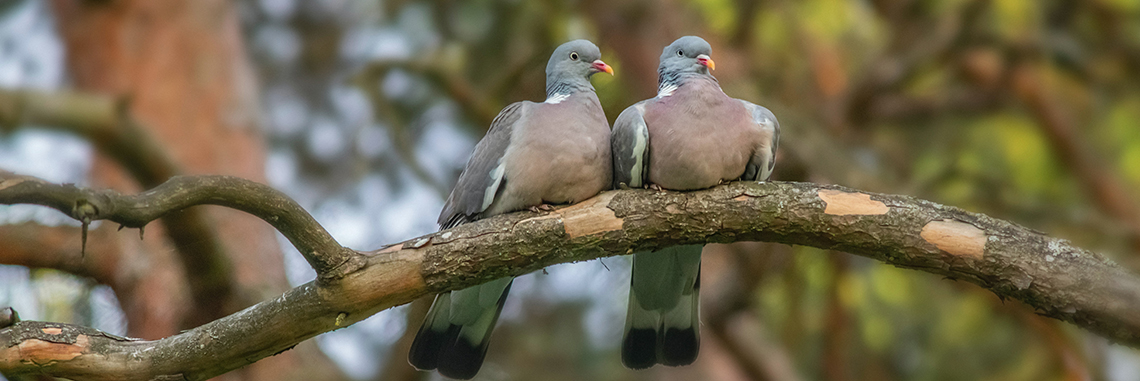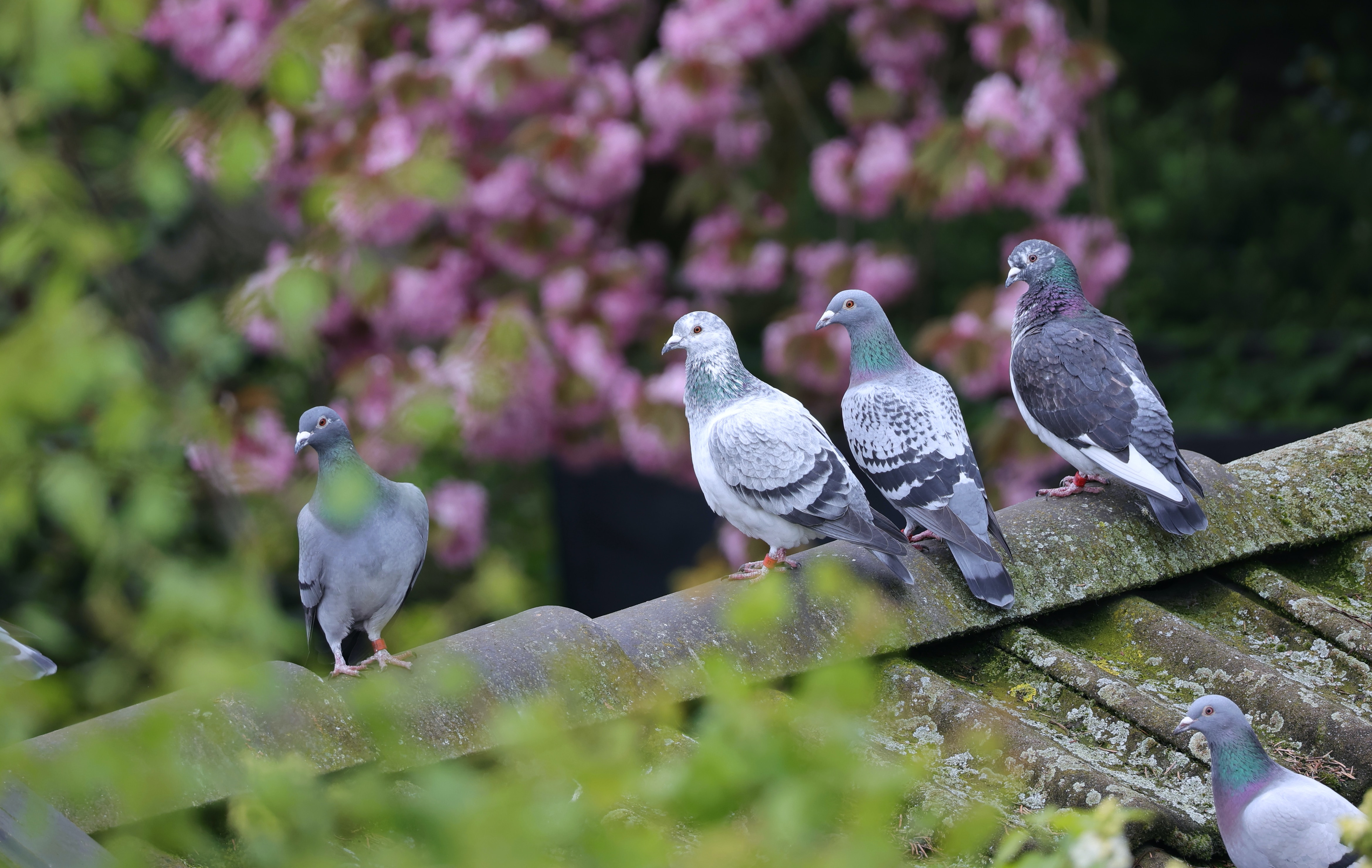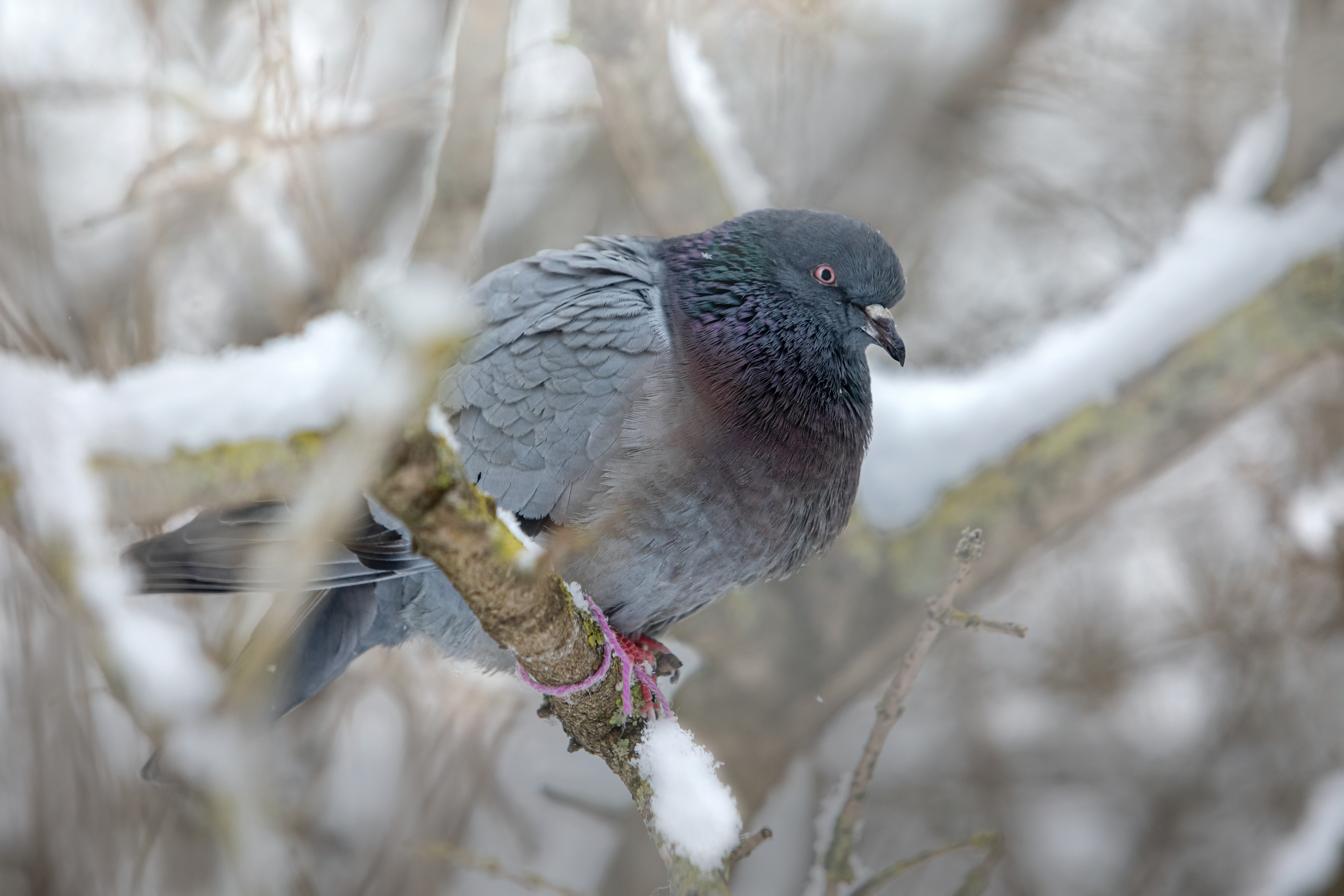November Doves

By Jose Luis Gallego, environmental communicator (@ecogallego)
Part of the Columbidae family, pigeons and doves make up one of the most popular groups among the birdlife of our fields, villages, and cities. As expert aviators endowed with a strong, muscular, compact body, they are especially skilled at high-speed flight and all sorts of aerial acrobatics.
Certain species, such as the wood pigeon and the stock dove, are less common in populated rural and urban areas given their predilection for the kind of open spaces found in mountain valleys. By contrast, other species decided long ago to settle among us, developing such abundant communities along city avenues and squares that they have become our feathered neighbours. This is especially true of the rock pigeon (Columba livia).

Several rock pigeons gathered on a rooftop
The pigeons that dwell in our cities descended from this wild species, but their habits and appearance have little in common with their undomesticated kin. The latter live in gullies and crags along river valleys and are actually among the most beautiful birds of the Iberian fauna. Their natural plumage pattern is stormy grey with black bands along the wings. Around the neck, the feathers display gorgeous iridescent shades of green and purple, which become even more striking in male pigeons during the mating season.
They are swift fliers, capable of reaching great speeds, beating their wings in quick succession and changing pace with astounding agility. These are essential skills to escape attacks from their great natural predator: the peregrine falcon. Wild populations are almost exclusively rock dwellers, establishing large colonies on coastal cliffs or in the crags along river gorges, where they can also be found in great numbers.
Although they have become omnivores in cities, feeding on all kinds of our food scraps in parks and restaurant terraces, rural rock pigeons are essentially herbivores. They flock to fields and vineyards where they forage the ground in search of seeds and grains. The rock pigeon is about 33 cm tall and weighs around 300 grams.
Far exceeding the rock pigeon in size, yet similar in appearance, the wood pigeon (Columba palumbus) is the largest species of this group. Compared to the rock pigeon, its plumage is more uniform, soft grey in colour, with a slightly violet-tinged bib. On the neck, it sports a distinctive white and green patch. The wood pigeon is easy to identify in flight, because its wings display interspersed black and white feathers with a broad white wing band. It is over 40 cm tall and can weigh up to half a kilo.

A pair of wood pigeons on a branch
More rural and less cosmopolitan than the rock pigeon, the wood pigeon’s distribution radius extends across all wooded areas, from mountains to valleys. Their populations are very abundant during the migratory season, especially during the first weeks of November when flocks from Central and Northern Europe cross the mountain passes of the Pyrenees at high speeds. They make for a spectacular sight as thousands of birds fly in formation to spend the winter in our natural environs or continue across the strait towards Africa.
For years, amateur bird watchers have flocked to certain places, such as Navarra, from all over the country to witness one of the most astonishing natural spectacles on the Iberian Peninsula. Flocks consisting of hundreds of thousands, occasionally even more than a million birds, cross the mountain passes at breakneck speeds, producing a whistling sound not unlike artillery shells. That said, ornithologists who have been observing this phenomenon at the best-known mountain passes – including Irati, Belate, or Baztan – have reported on a very peculiar behaviour.
For some years, they have witnessed flocks of wood pigeons crossing the mountains into Spain in the morning to then turn around and fly in the opposite direction – back to France, in other words – at dusk. The reason for this is climate change.
Wood pigeons from Northern Europe usually make a stopover in the Nature Reserve of Landes in Southern France, but then obey their genetic mandate and continue south rather than staying put. However, in recent years, on crossing the Pyrenees and encountering an excessively hot and dry Iberian Peninsula, they decide to turn back and return to Landes, where they settle and forage for food in the crop fields surrounding the woodlands and find far more water.
This means that the traditional Pyrenees crossing of the November pigeons to spend the winter in the Iberian forests – a phenomenon which marked a special chapter in nature’s calendar – is at risk of becoming a quick roundtrip if global warming continues unabated. Yet more evidence of climate change and its impact.
Finally, we have the stock dove (Columba oenas), far less common and wilder than the other two species. Although similar in appearance to the wood pigeon, the stock dove is smaller and has a slimmer silhouette. The chest feathers have a far more pinkish hue, and the neck patch is turquoise in colour, without any white. Its eyes are very big and black. The grey band that cuts across the tail is far narrower compared to the wood pigeon, and in flight, the wings display a seamless grey colour with black tips and no white band dividing them in two. In terms of height and weight, the stock dove resembles the rock pigeon.

